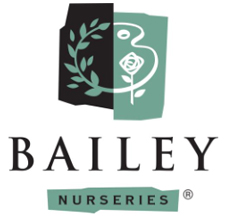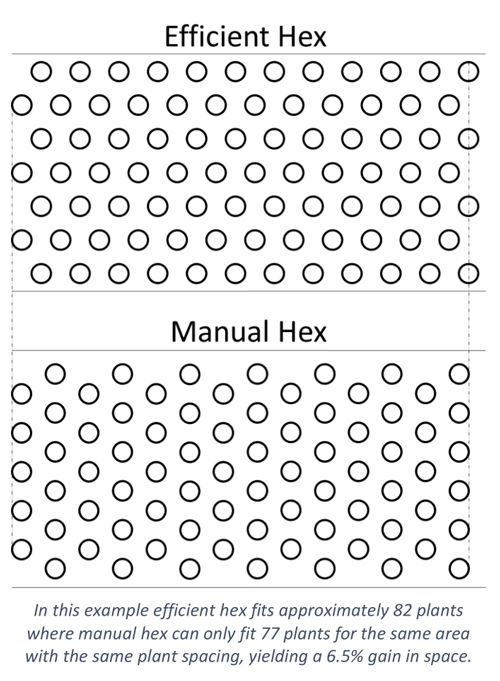As a result of their robot purchases Bailey Nurseries can switch to this new configuration and gain up to 15% more space for free.
Contributed by | Harvest Automation
The last decade’s global financial crisis that hit the world, and the US housing market in particular, had far reaching repercussions that meant bad news for the nursery and greenhouse industries. When new home construction stalls, landscapers aren’t buying new plant stock. When people are worried about paying their mortgage or staying in their homes, they certainly will not be thinking about their garden or landscaping. This meant tough times for nurseries and greenhouses across the nation. Many were forced out of business; the survivors were forced to become more efficient. Since then the nation and world has struggled to recover; growth is slow but steady, people are feeling better about their financial situations, and as a result the nursery and greenhouse industry is beginning to recover.
 John Fisk, Production Manager at Bailey Nurseries’ Minnesota production facilities can attest to the industry’s woes over the past few years. “The ornamental horticulture industry is on its way back, but it’s not like it was in the past. Profit margins are lower, costs are higher and adding new capacity is risky.” Fisk has long been a believer that automation is the key to placing this industry on a path to a sustainable future. In 2014, under Fisk’s direction, Bailey Nurseries continued its move towards automation of certain production roles by purchasing four HV-100 robots.
John Fisk, Production Manager at Bailey Nurseries’ Minnesota production facilities can attest to the industry’s woes over the past few years. “The ornamental horticulture industry is on its way back, but it’s not like it was in the past. Profit margins are lower, costs are higher and adding new capacity is risky.” Fisk has long been a believer that automation is the key to placing this industry on a path to a sustainable future. In 2014, under Fisk’s direction, Bailey Nurseries continued its move towards automation of certain production roles by purchasing four HV-100 robots.
Harvest Automation HV-100 robots are capable of handling all of the plant spacing, consolidation and collection needs in a nursery or greenhouse operation. They require minimal training to operate, while reducing production costs and improving productivity. They are flexible to deploy on open beds, hoop houses and greenhouses with any type of plant on all common ground surfaces including concrete, ground cloth, poly, and gravel. The robots provide consistent spacing accuracy no matter how long the day is, without breaks, allowing growers to get quality work done whenever they need it.
For many nurseries and greenhouses adding additional space is costly, time consuming and risky. “Here at Bailey Nurseries, we have embraced the mantra ‘Do More with Less,’” said Fisk. Building new beds to produce more plants for this slowly rebounding demand means costly acquisition of new land, surfacing the beds or building greenhouses, running irrigation and purchasing all of the necessary support equipment. If sales forecasts were to fall short of expectations, Bailey would be stuck with the increased overhead of unutilized space.
Harvest Automation robots can help to alleviate this space concern. Typically when people space plants they use a square or manual hex pattern as shown in the examples here. Creating a manual hex pattern is easy for people, as it can be facilitated using guides or simple measurements; however this pattern leaves gaps along the long edge of the bed. A more efficient pattern, known as efficient hex positions pots such that there are no gaps along the long edge of the bed, but rather on the shorter ends of bed. This allows a grower to fit between 5% and 15% more plants on a given bed. An efficient hex pattern is difficult for manual laborers to do, but for robots this is a simple calculation that can be performed in an instant.

As a result of their robot purchases Bailey Nurseries can switch to this new configuration and gain up to 15% more space for free. “Typically adding 15% more field space comes at great cost and risk,” said Fisk. “We were excited to find that with the HV-100 robots spacing plants into efficient hex, we have been able to fit an extra 200 to 300 more plants in a bed by investing in the robots.”
The HV-100 is meant for year-round use, with capabilities for spacing plants in the spring, re-spacing picked over fields once shipping has begun and collecting plants to can-tight in the fall for winter protection. For operations large and small, the HV-100 makes sense for any nursery and greenhouse. Getting quality work done when it’s needed most. To talk to Harvest Automation Sales about our flexible rental, payment and financing options, or to schedule an on-site demo please call us at (978) 528- 4250 or visit www.harvestai.com
For more information about Bailey Nurseries please visit www.baileynurseries.com.

About Harvest Automation
Harvest Automation is a startup material handling company headquartered outside Boston, Massachusetts — an area known for robotics innovation. Our team members are industry recognized leaders in robotics and new product development with a track record of developing cutting-edge technology products and successfully bringing them to market. Our robots operate safely and efficiently in teams with human workers — a dramatic innovation in the world of manual labor.
Harvest's robots resolve acute manual labor problems across multiple industries, starting with Agriculture. In many industry sectors labor availability, changing labor laws, and tightening environmental regulations are simply unsustainable. These fundamental risks and cost pressures are driving a critical need for automation.
The content & opinions in this article are the author’s and do not necessarily represent the views of RoboticsTomorrow
Comments (0)
This post does not have any comments. Be the first to leave a comment below.
Featured Product


